Today we are going to review the cheapest 8-port 10GbE switch we could find, the TP-Link TL-ST1008F (V1). This switch retails for about $166 on AliExpress with free (slow) shipping. A lot of our readers use SFP+ for 10GbE and the supply of other switches in this class like the MikroTik CRS309-1G-8S+IN is tight right now. So we found a switch that is only around $20-21/ port and wanted to see if it is any good.
TP-Link TL-ST1008F Hardware Overview
We already reviewed the 2.5GbE causing of this switch, in the Cheapest 2.5GbE 8-port Switch TP-Link TL-SH1008 Review. Patrick, our Editor-in-Chief, wanted to do one combined video instead of two so here that is:
As always, we suggest opening that in its own YouTube browser, tab, or app for a better viewing experience. We demonstrate the power consumption in more detail in the video.
The front of the unit has the switch’s model number and a power LED like the 2.5GbE version, but these are on opposite sides from its cousin. This time we find an oddly placed CE sticker on the front of the all-metal chassis.
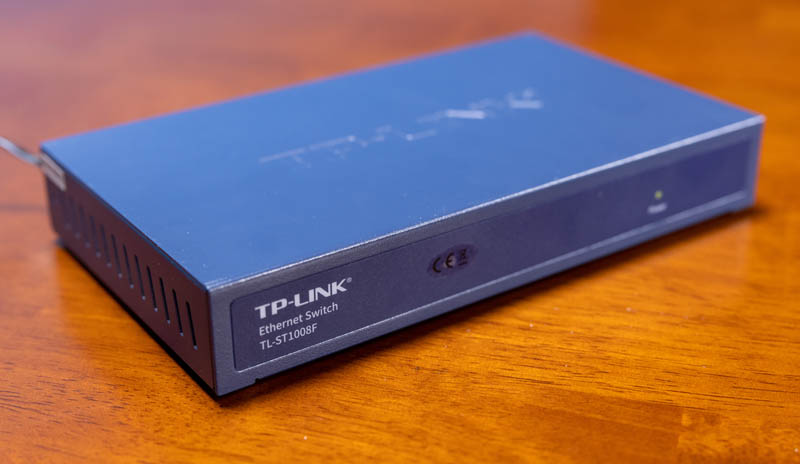
The unit that we are looking at is the V1. This you can see on the label on the bottom of the switch. We will note that there is supposed to be a V2 version, but V1 is what we just got a few weeks ago. We do not know how to ensure you get V2. V2 is supposed to be better with things like running at multi-gigabit speeds. You can see more on V1 v. V2 in the STH forums here.
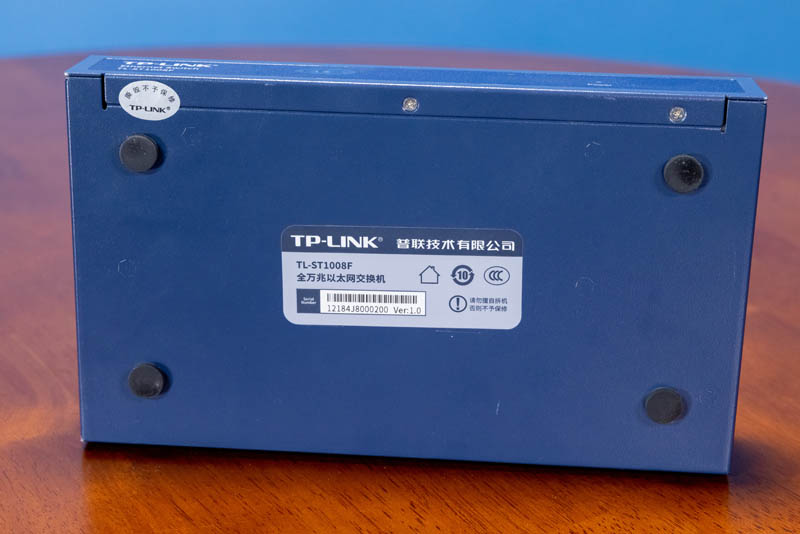
The main side of the switch has eight SFP+ 10GbE ports. There is also a 12V 2A DC power input. On the left side, there are the link and activity lights. The link lights seemed to work, but they were not consistent and did not seem to indicate activity nor link speed.
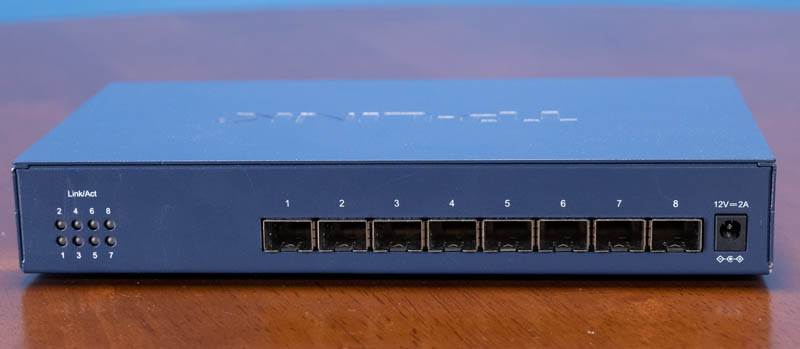
This is a fan-less switch, so we just have simple venting on the side of the metal switch and no fan in the chassis. We will note that this does not have a typical 3 or 4 screw mounting pattern for adding rackmount ears, so it is really a desktop unit.
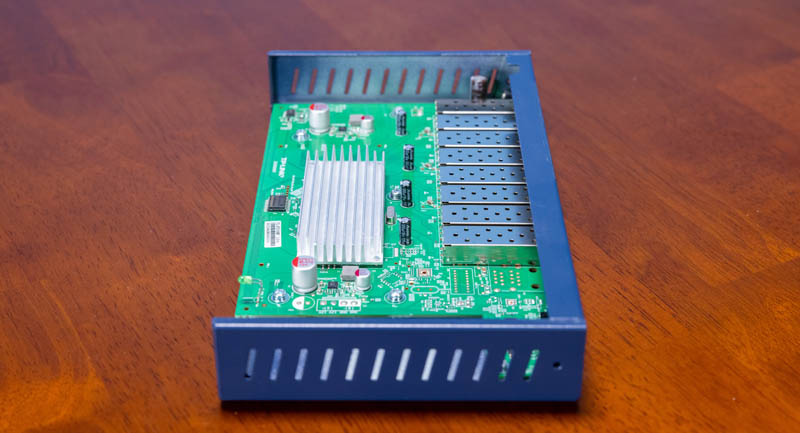
The switch chip here is the Realtek RTL9303 which you can find more on here. Technically, this is a L3 managed switch chip, but this is an unmanaged switch. The managed versions cost more, but you can find them.
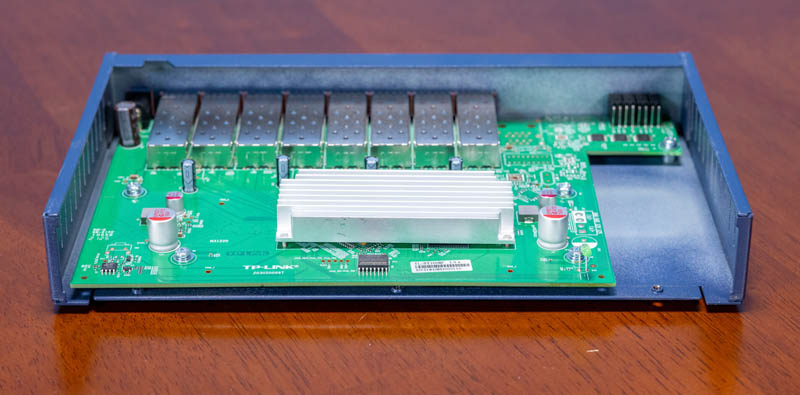
We can also see the SFP+ cages at the bottom. Overall these worked well and were cooled as we would expect.
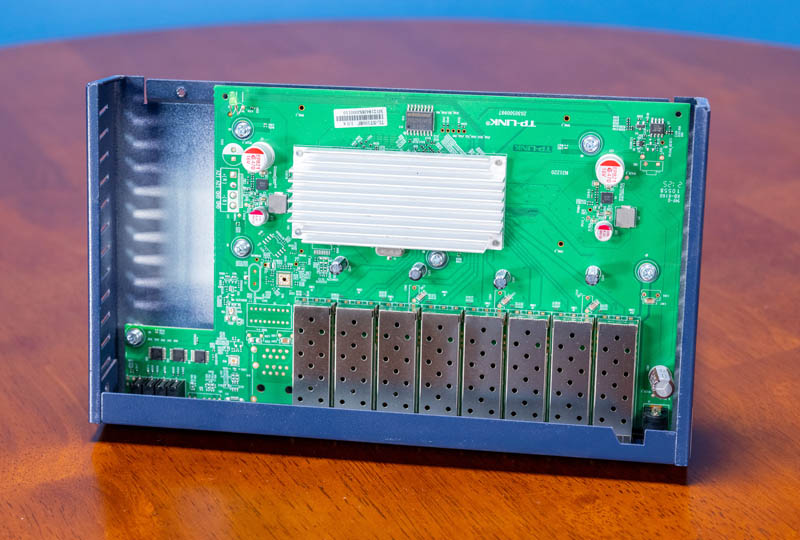
Next, let us get to performance before discussing power consumption.
TP-Link TL-ST1008F Performance
In terms of performance, we simply hooked up 2x Intel X710-da4 cards via DACs to the switch and just bounced iperf3 traffic from port to port.
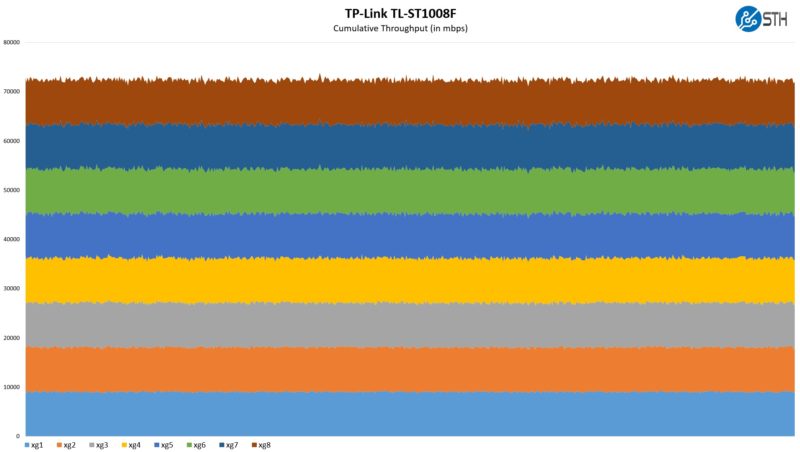
Here we saw decent speeds just passing simple traffic over the unmanaged switch. This is exactly what we would expect in this market segment.
Next, let us get to the power consumption and noise.

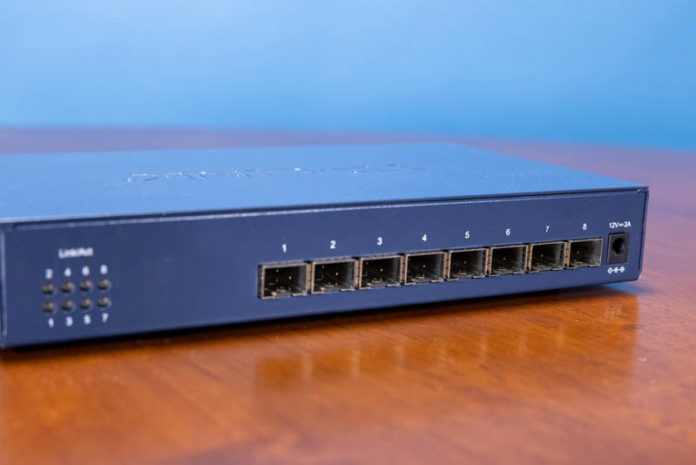



Fanless, with a 12V 2A power supply, it seems they expect DAC to be used in several ports
Just pay up for the manged 3008.
How would you get over 24W at 12V 2A, even at 100% efficiency? Mid to high 20W range is impossible without a power supply that is out of spec for the unit. Without a UL rating, that means fire, and a fire that insurance won’t cover. Don’t do it.
@JohnG: Yes, I’ve been looking at the 3008. Wish STH would review that one.
@JohnG; the 3008 looks like much nicer hardware; but I have to admit to seeing ‘managed'(especially now that everyone wants their cut of the cloud-connected stuff) as more of a double-edged sword than an obvious upgrade at price points where the hardware is likely to choke on more than relatively lightweight and computationally inexpensive management configurations and the vendor is all too likely to abandon the management interface and OS as a pile of network-facing CVEs in the not too distant future.
Obviously there are some applications for which unmanaged simply won’t do; but adding a chunk of firmware in a privileged position whose vendor likely doesn’t care that much seems like a pretty mixed blessing if you are mostly in the market for something more elegant than point-to-point.
@fuzzyfuzzyfungus: Agreed about avoiding cloud management, and about limited capabilities of these low-end switches. But AFAICT the 3008 can be managed entirely locally from a terminal via an extensive CLI (~1000 page manual available). And the fan-free low-power nature of these switches can be a great benefit at home. Seriously considering the 3008 because it’s much easier to find than the CRS309 right now.
Are there any good and cheap 8+ port 10GbE RJ45 switches out there? SFP+ to RJ45 adapters are quite expensive, adding substantial cost per port. I’m currently using QNAP QSW-M408-4C on my desktop, but it only has 4 10GbE ports.
So now we see STH pushing goods of dubious safety value?
/shaking my head/
TP Link actually sells proper hardware in South East Asia… Even in Singapore where we’re not exactly broke.
So, it’s not dubious safety value. It just wasn’t tested for other countries as this particular model is intended for domestic (meaning China) sale.
The Mikrotik CRS-305 isn’t included in your parts list?
I’m sure you can still find them for less then that tp link garbage
Myne – We reviewed the CRS305. That is only a 5-port switch, not an 8-port version.
I’d rather my money go to a democratic country like Latvia (Mikrotik) than a communist dictatorship (China) but hey, that’s just me.
Lesson learned a couple of years ago using CRS-305’s to avoid “heat issues” on the fan-less 10GB switches.
1. Use DAC’s when possible. Lower heat.
2. Use Fiber Optic SFP+ Transceivers for those long runs. No heat.
3. Take the heat bump on the SFP+ to RJ-45 only when I need to have a drop down to 2.5GB or 1GB on that port. DAC’s don’t work for me to do that.
4. Put these “shelf” 10GB fan-less switches where there is a lot of air flow.
5. MicroTik, FS (Fiber Store), QNAP, TP-Link, etc all have better soluitions for larger number of 10GB switch ports now-adays.
I just ordered tl-st1008f which is optical ports. can I use standard rj45 ethernet cables. the pictures show a v2 switch to 2.5 gb. or do I need some kind of adapter rj45 to optical?
I have the TP-Link TL-SX1008(UN) V2.6 ordered via Amazon. It’s a bit more than the Ali Express version in the review. I will say it seems to be working okay, and definitely auto negotiating… I haven’t run any performance/speed tests, but happy so far. I still have a couple cables to run before I can properly speed test.
My home server is connected at 2.5g (per its’ onboard nic, MinisForum HX90) and my Synology NAS’s new 10g nic is connected at 10g. Once I get the 10G nic in my desktop next week will give some performance numbers.
Price went down to $119 shipped on Aliexpress, increasing the gap with the Mikrotik by $110 so I’ll take my chance on the 10GB.